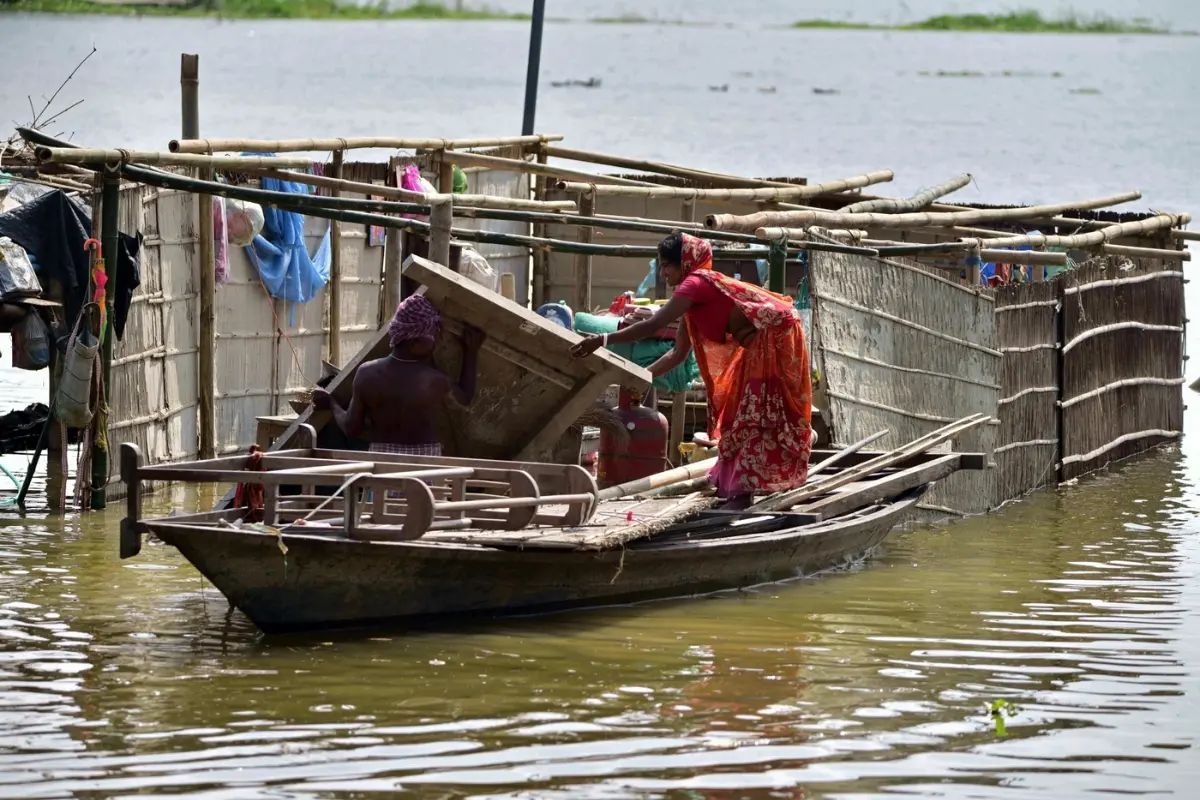
Despite significant improvements in the flood situation over the past 11 days, Assam continues to grapple with the aftermath of monsoon rains.
On Tuesday, a tragic incident occurred in Dhemaji district, where one person drowned, according to the Assam State Disaster Management Authority (ASDMA).
As of Tuesday, over 4 lakh residents are still affected by the floods across 16 of Assam’s 35 districts.
The floods this year have claimed the lives of 97 individuals across 23 districts, with an additional 10 fatalities resulting from landslides and other monsoon-triggered calamities since early June.
Cachar district in southern Assam has reported the highest death toll, with 22 casualties.
Assam Flood: Agricultural & Environmental Impact
Floodwaters continue to submerge 19,724 hectares of crop area, impacting 1,021 villages within the 16 affected districts.
The districts of Dhubri, Cachar, Dhemaji, Goalpara, and Nagaon remain the worst hit.
The Brahmaputra River is still flowing above the danger mark at Neamatighat, Tezpur, and Dhubri.
Additionally, the Kushiyara and Disang rivers have also surpassed danger levels in several areas, exacerbating the flood situation.
In response to the ongoing crisis, the ASDMA has established 122 relief camps, providing shelter to over 15,475 individuals displaced by the floods.
Furthermore, 38 relief distribution centers are operational in various districts, offering essential supplies to those in need.
Local authorities and disaster management teams continue to work tirelessly to mitigate the effects of the floods and provide aid to affected communities.
Efforts include monitoring river levels, reinforcing embankments, and ensuring the availability of medical and logistical support in the relief camps.
The ASDMA remains vigilant as the state progresses through the monsoon season, with a focus on reducing the impact of future flooding and enhancing the resilience of affected communities.
While the immediate flood situation shows signs of improvement, the long-term recovery for Assam will require sustained efforts in rebuilding infrastructure, restoring agricultural lands, and supporting displaced populations.
The state’s resilience and preparedness will be crucial in facing the ongoing challenges posed by the monsoon season.
Also Read: Supreme Court To Review Allegations Of NEET-UG 2024 Irregularities
To read more such news, download Bharat Express news apps





















